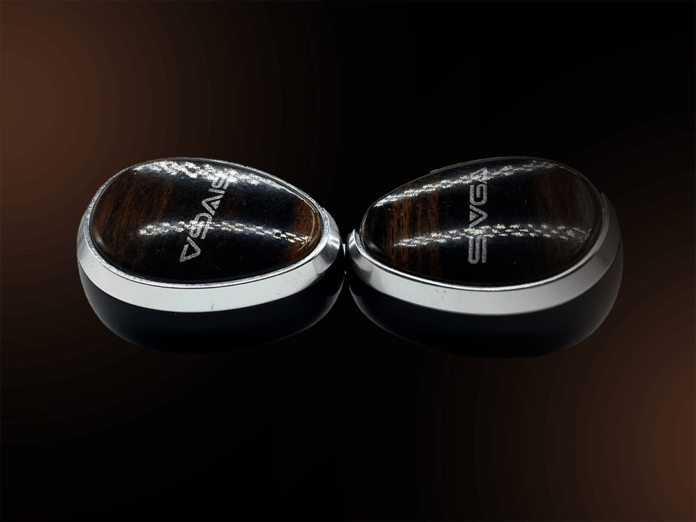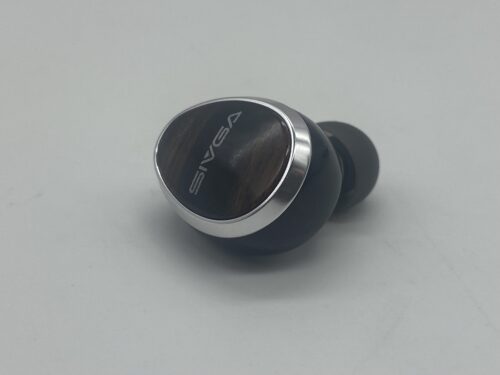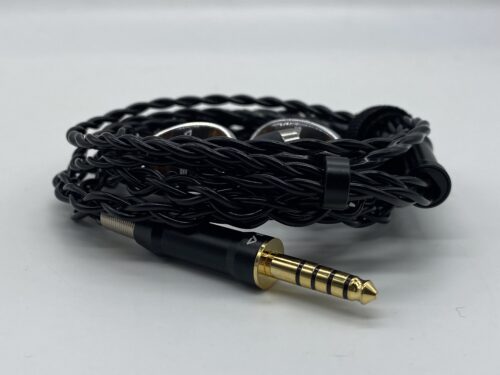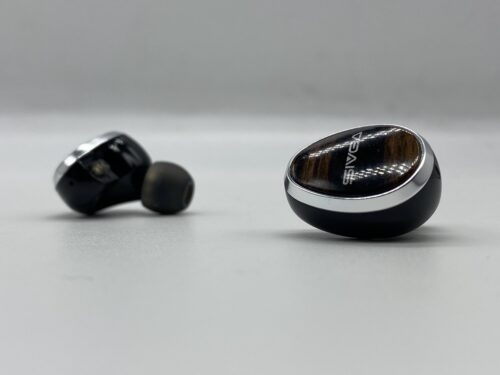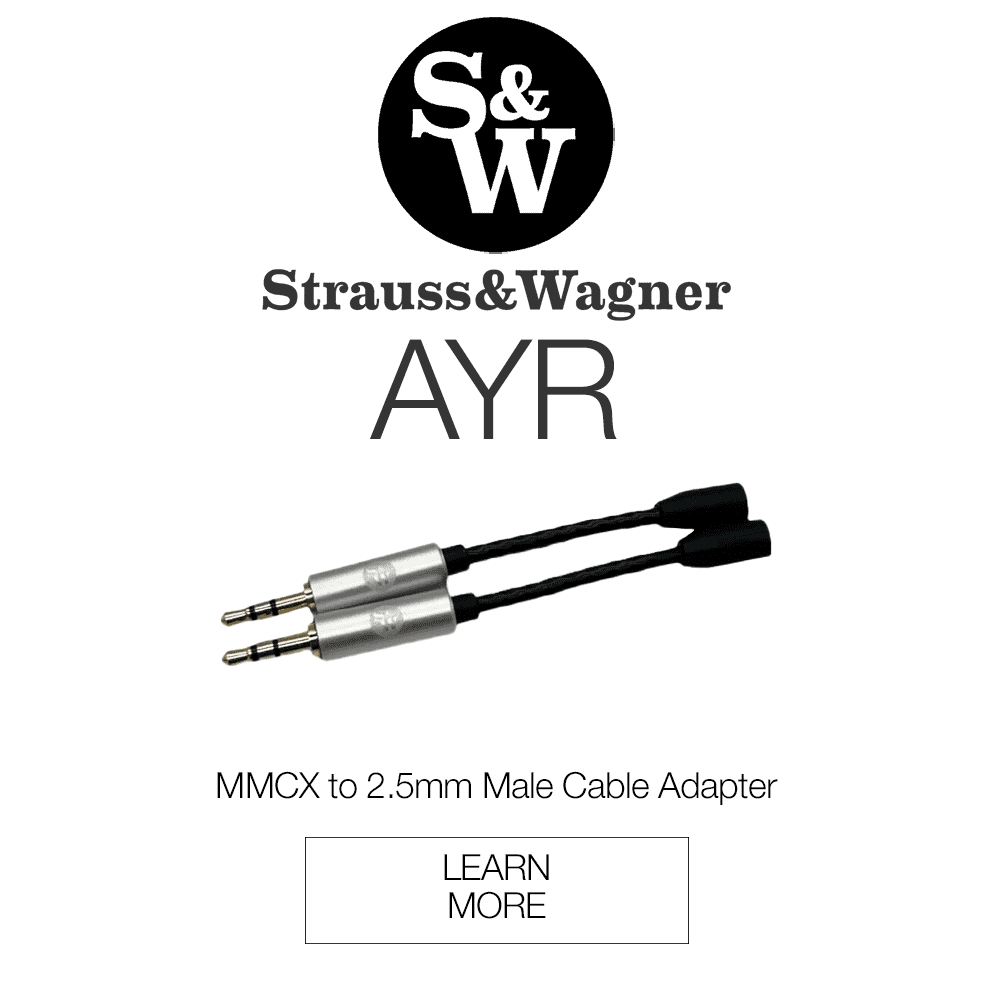Sivga is mostly known for its affordable open-back and closed-back headphones but has released some in-ears from time to time. In fact, Sivga’s line of sports earphones has been very impressive. The new Nightingale is Sivga’s latest attempt at a more audiophile-centric product, this time in the form of a planar IEM. If Sivga can impress me with earphones made for sports, then planar IEMs make me very excited. For $229, let’s see if the Nightingale can meet those expectations.
What You Get
- SIVGA Nightingale
- Hard carrying case
- 2x Eartip size M
- 2x Eartip size L
- 2x Eartip size S
- 1x Eartip case
Look & Feel
With the Nightingale, Sivga tries for a design that you haven’t really seen before. The water droplet-shaped shell gives these IEMs a unique look and distinguishes them from other IEMs on the market. Its wooden front plate finish brings some Sivga identity to the Nightingale, and its metal outline brings the construction of these earpieces together with elegance. They’re very light too, offering a fine seal mixed with general comfort.
Design
The Nightingale features a 14.5mm planar magnetic driver. It utilizes dual magnets for higher transmission sensitivity. These are rare iron boron magnets that are meant to improve efficiency compared to standard single magnets. Its diaphragm is made of a thin material that’s also combined with an aluminum coil, hoping it will result in better transparency and soundstage performance.
Soundstage
I’ve been very impressed with what Sivga can do with simple sports earphones, so the prospect of planar IEMs from them excites me. Sivga always gives their headphones great sound staging and imaging, which also reflects on the Nightingale. Playing your first track through the Nightingale, you immediately get a sense of the scope that the soundstage conveys. You get a strong stereo field that spans wide from left to right.
Both channels leak outward and expand the headspace slightly, though it doesn’t quite become open-air. The imaging displays a level of positioning where everything is kept out of the middle. It results in a soundstage that feels like a bubble, but strangely a very holographic one. There’s definitely a dimension to the imaging, but it comes off as a more streamlined sound. The sound elements express solid height and depth and have realistic size to them. It’s spacious, with good separation, but not in a way that calls too much attention to itself.
Low End
Everything presented in the lows here is extremely subtle and dynamic. It never comes together to display a consistent tone, but still responds smoothly when called upon. There’s a naturalness to it that always picks its spots evenly. You get some mid-bass punch, but it doesn’t make a huge impact, coming off as a bit thin. What really makes a significant impact is the sub-bass, which creeps up and establishes an underlining vibration that adds a good texture to the sound signature. It’s still a subtle response, but makes a big difference. When some notes sustain in the mix, that’s where it really shines, revealing an exceptionally clean rumble that brings life to the bass.
Mids
The midrange is very lush, and super clean when it comes to presenting a lot of different instruments. It flattens out around the low mids and brings out the upper mids for more articulate performances. This boost, adds a fine level of crispness to the timbre but it doesn’t come off as colonizing the sound. Instead, the instruments and vocals are presented realistically. Each note feels like it has a distinct snappiness and bite, bringing a lot of identity to this sound signature. Everything has room, and vocals cut through effortlessly, appearing above a lot of the bed of instruments.
Highs
There is a lot of similarity with how the bass responds in the highs. Most of that has to do with the subtlety of the tone, as the highs possess a present but reserved response. There are most instances of consistency with its texture, and it comes off very elegantly. The treble has a low brightness that only compliments the detail provided by these frequencies. You’ll find a light airiness to the timbre, with a small ring that brings out the height and tail of many different sound elements.
Summary
Planar IEMs are becoming more common, and Sivga’s Nightingale is one of the most enjoyable of the crop so far. Its design is fantastic, and its sound is supremely elegant, especially for its price tag. It might not have everything you’re looking for in a sound signature, like bass depth for instance, but the musicality here is still in a league of its own.
| Pros | Cons |
|
|
The Sivga Nightingale is available at Audio46.
Compare the ranking of various headphones, earbuds and in-ear monitors using our tools.
Discuss this, and much more, over on our forum.
---MAJORHIFI may receive commissions from retail offers.


